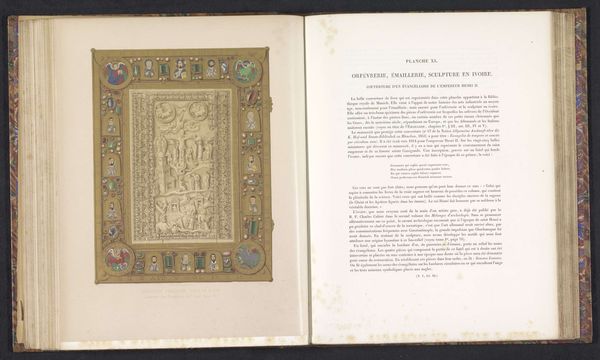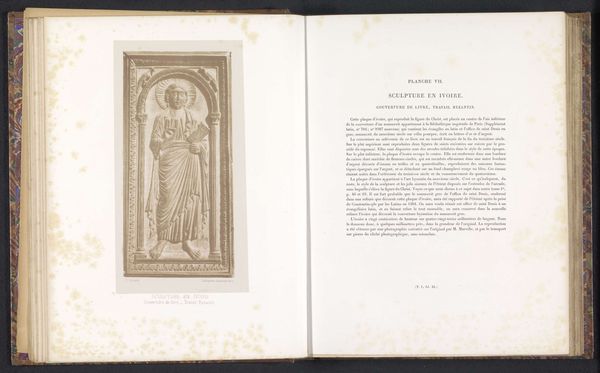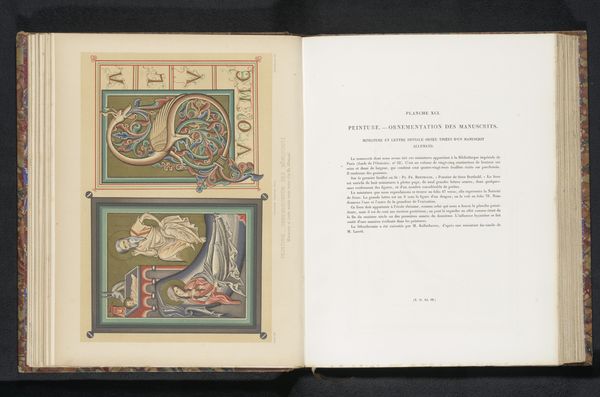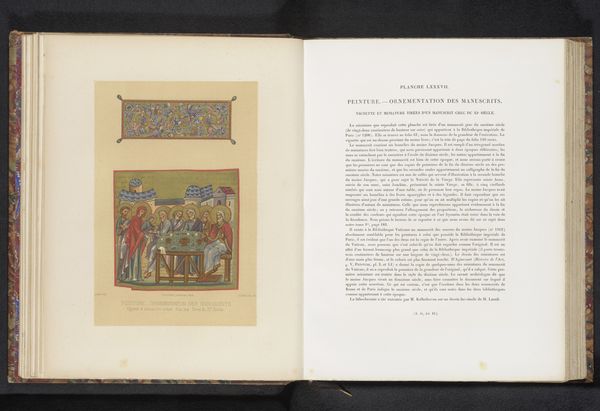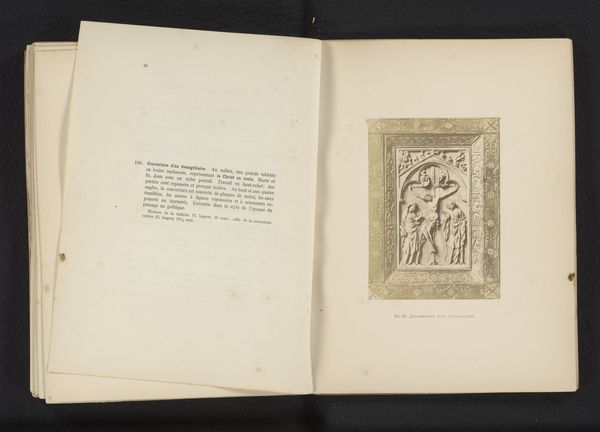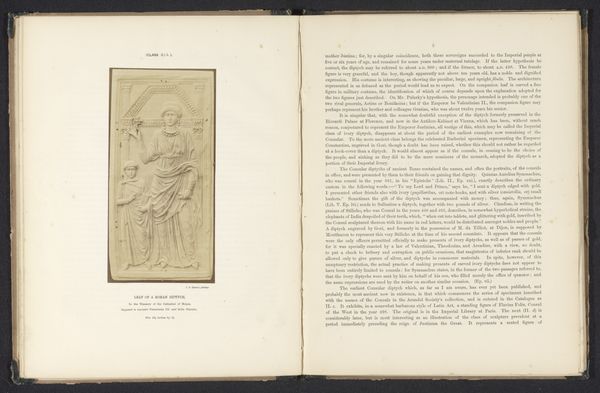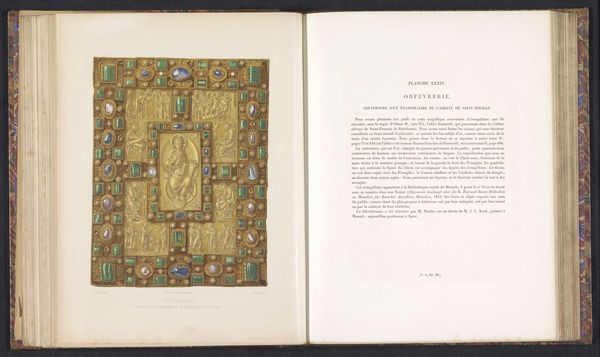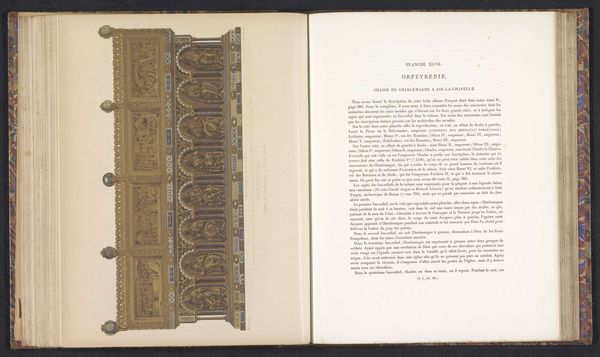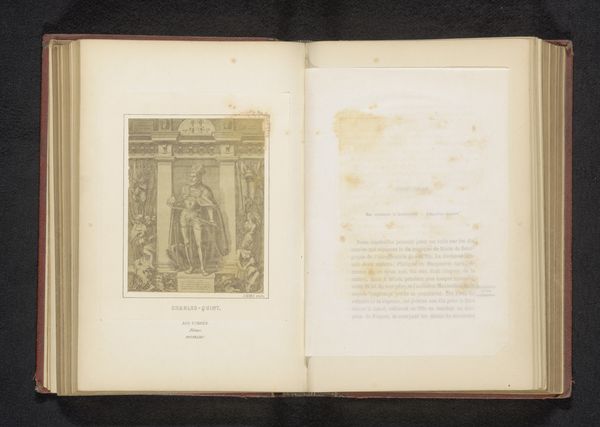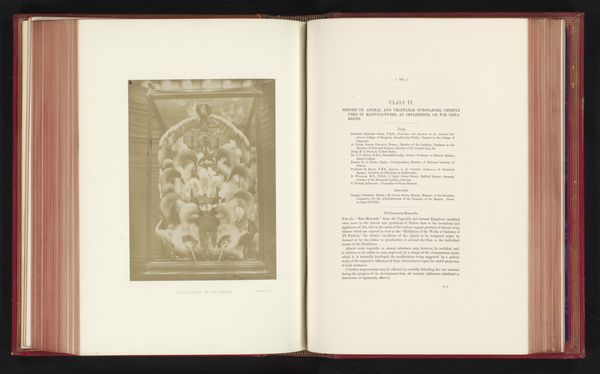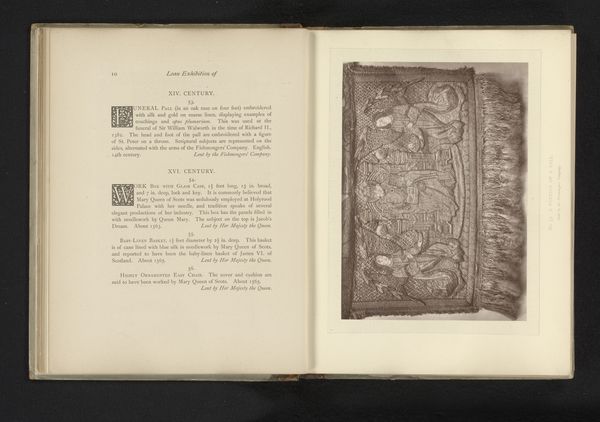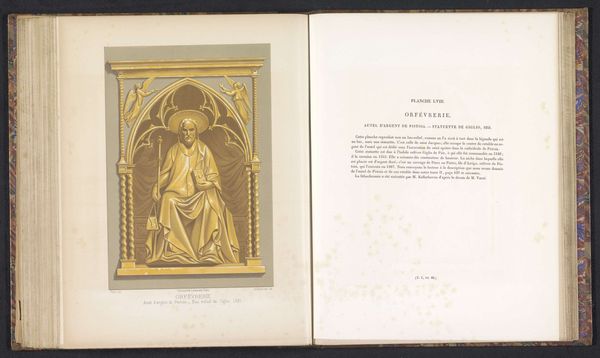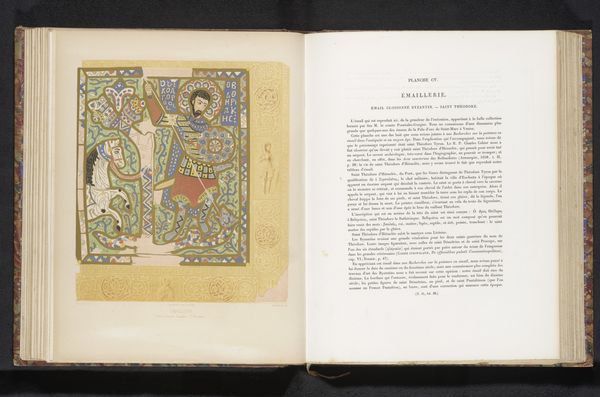
print, engraving
#
medieval
# print
#
figuration
#
coloured pencil
#
history-painting
#
engraving
#
historical font
Dimensions: height 202 mm, width 167 mm
Copyright: Rijks Museum: Open Domain
Curator: The 'Gouden kist van een evangeliarium', or Golden Chest of a Gospel Book, offers an intriguing glimpse into medieval craftsmanship. This engraving, predating 1864, depicts a meticulously adorned book cover. What's your immediate reaction to it? Editor: It’s immediately striking, almost overwhelming, in its detail. The central panel with the crucifixion feels solemn and reverent, but surrounded by such elaborate decoration, I can’t quite reconcile the mood. Is that deliberate? Curator: It invites questioning, certainly. Contextually, such elaborate decoration underscored the spiritual and earthly power interwoven with the Gospel. Consider the historical function of illuminated texts, which weren’t merely to be read, but performed and displayed to legitimize socio-religious narratives. The embellishments broadcast wealth and power. Editor: And what kind of power dynamics might that display legitimize, specifically? The figures surrounding the crucifixion are interesting; is their gender, class, or social position highlighted by this depiction? Curator: Examining depictions of the crucifixion within broader feminist theory, for instance, is paramount. How do representations of Christ, and surrounding figures like Mary Magdalene or other mourning women, solidify patriarchal structures or alternatively offer a site for female empowerment and agency, for medieval audiences as well as those of the 19th century when the engraving was created? Editor: Thinking about it in those terms reframes how I see the piece. It’s easy to get lost in the visual details, but we must understand its broader implications. I am thinking not just about the original book cover but the means of reproduction that makes the image accessible to us. Curator: Exactly! Consider, then, this 19th-century engraving as a way of classifying medieval culture for specific purposes of the engraver and the book that contains it. These kinds of questions concerning the history of an image open up a whole field of interpretation. Editor: It is amazing how such intricate images act as both objects of aesthetic contemplation and windows into historical and cultural understanding, helping us explore intersectional narratives related to identity and politics. Curator: It does leave you pondering, doesn’t it?
Comments
No comments
Be the first to comment and join the conversation on the ultimate creative platform.
